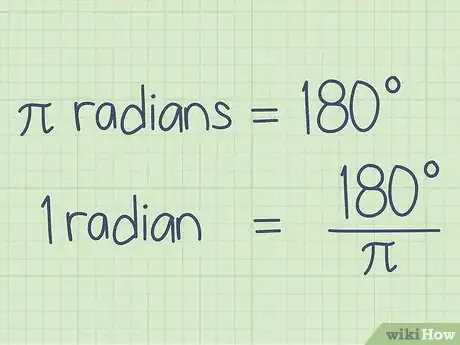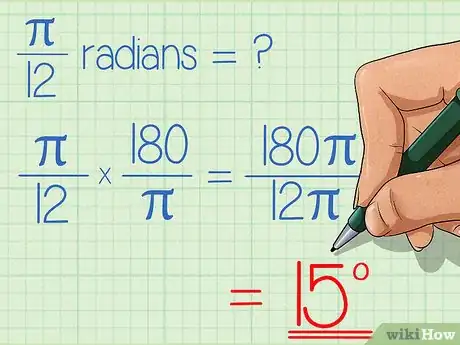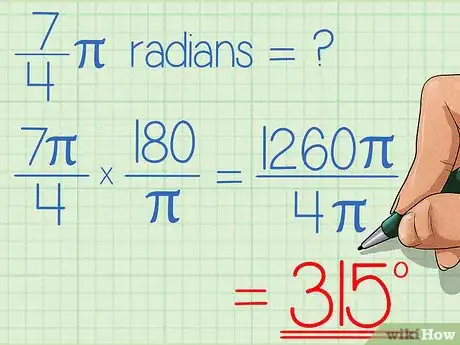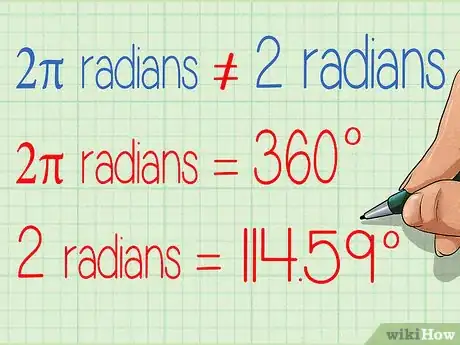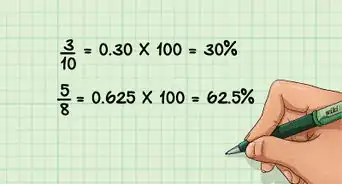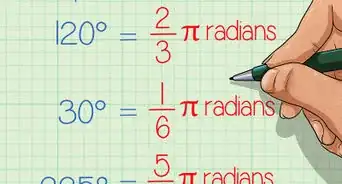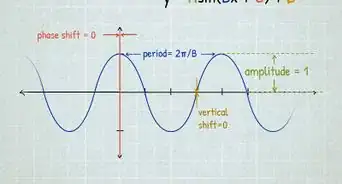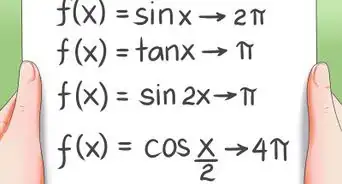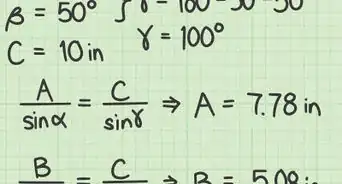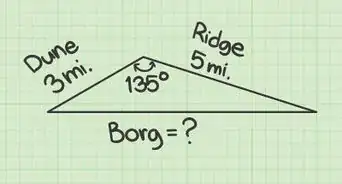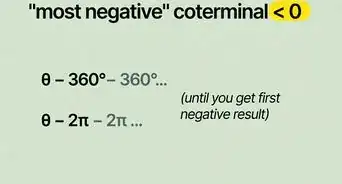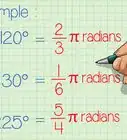wikiHow is a “wiki,” similar to Wikipedia, which means that many of our articles are co-written by multiple authors. To create this article, 16 people, some anonymous, worked to edit and improve it over time.
wikiHow marks an article as reader-approved once it receives enough positive feedback. In this case, several readers have written to tell us that this article was helpful to them, earning it our reader-approved status.
This article has been viewed 809,649 times.
Learn more...
Radians and degrees are both units used for measuring angles. As you may know, a circle is comprised of 2π radians, which is the equivalent of 360°; both of these values represent going "once around" a circle. Therefore, 1π radian represents going 180° around a circle, which makes 180/π the perfect conversion tool for moving from radians to degrees. To convert from radians to degrees, you simply have to multiply the radian value by 180/π. If you want to know how to do this, and to understand the concept in the process, read this article.
Steps
-
1Know that π radians is equal to 180 degrees. Before you begin the conversion process, you have to know that π radians = 180°, which is equivalent to going halfway around a circle. This is important because you'll be using 180/π as a conversion metric. This is because 1 radians is equal to 180/π degrees.[1]
-
2Multiply the radians by 180/π to convert to degrees. It's that simple. Let's say you're working with π/12 radians. Then, you've got to multiply it by 180/π and simplify when necessary. Here's how you do it:[2]
- π/12 x 180/π =
- 180π/12π ÷ 12π/12π =
- 15°
- π/12 radians = 15°
Advertisement -
3Practice with a few examples. If you really want to get the hang of it, then try converting from radians to degrees with a few more examples. Here are some other problems you can do:
- Example 1: 1/3π radians = π/3 x 180/π = 180π/3π ÷ 3π/3π = 60°
- Example 2: 7/4π radians = 7π/4 x 180/π = 1260π/4π ÷ 4π/4π = 315°
- Example 3: 1/2π radians = π /2 x 180/π = 180π /2π ÷ 2π/2π = 90°
-
4Remember that there's a difference between "radians" and "π radians." If you say 2π radians or 2 radians, you are not using the same terms. As you know, 2π radians is equal to 360 degrees, but if you're working with 2 radians, then if you want to convert it to degrees, you will have to calculate 2 x 180/π. You will get 360/π, or 114.5°. This is a different answer because, if you're not working with π radians, the π does not cancel out in the equation and results in a different value.[3]
Calculator, Practice Problems, and Answers
Community Q&A
-
QuestionConvert 1.03 radians to degrees.
 DonaganTop AnswererWe know from working with the numbers in the article above that one radian is equivalent to approximately 57.3 degrees. Therefore, you would multiply 57.3 by 1.03 to find the number of degrees you're looking for.
DonaganTop AnswererWe know from working with the numbers in the article above that one radian is equivalent to approximately 57.3 degrees. Therefore, you would multiply 57.3 by 1.03 to find the number of degrees you're looking for. -
QuestionHow do I convert degrees into radians?
 DonaganTop AnswererThe easiest way to do it is to recognize that 180° equals π radians, or 3.14 radians. Then determine what fraction (or percentage) of 180° the angle you're concerned with is, and multiply that fraction by 3.14 radians. For example, to convert 60° to radians, divide 60° by 180°. That's 1/3. Then multiply 1/3 by 3.14: that's 1.05 radians.
DonaganTop AnswererThe easiest way to do it is to recognize that 180° equals π radians, or 3.14 radians. Then determine what fraction (or percentage) of 180° the angle you're concerned with is, and multiply that fraction by 3.14 radians. For example, to convert 60° to radians, divide 60° by 180°. That's 1/3. Then multiply 1/3 by 3.14: that's 1.05 radians. -
QuestionHow do I convert 11/16 of a radian to degrees?
 DonaganTop AnswererSince 1 radian is approximately 57.3 degrees, 11/16 of a radian is (11/16)(57.3°) = 39.39°.
DonaganTop AnswererSince 1 radian is approximately 57.3 degrees, 11/16 of a radian is (11/16)(57.3°) = 39.39°.
Things You'll Need
- Pen or Pencil
- Paper
- Calculator
References
About This Article
Radians and degrees are both units that you can use to measure an angle. Converting radians to degrees is pretty easy. First, remember that π radians is equal to 180 degrees, or half the number of degrees in a circle. That means that 1 radian is equal to 180 degrees divided by π. So, in order to convert radians to degrees, all you have to do is multiply the number of radians by 180 divided by π. For instance, let’s say you have to convert 1/2 π radians into degrees. Simply multiply π/2 by 180/ π to get 90 degrees. Be careful though, because while radians are usually written as multiples of π, this isn’t always the case. When you’re solving a problem where you have to convert radians to degrees, look at the numbers closely. Make sure, for example, that you don’t mix up 2 π radians with 2 radians. 2 π radians equals 360 degrees, or the number of degrees in a circle. However, 2 radians is equal to only about 114.6 degrees. For more examples of converting radians to degrees, read on!
